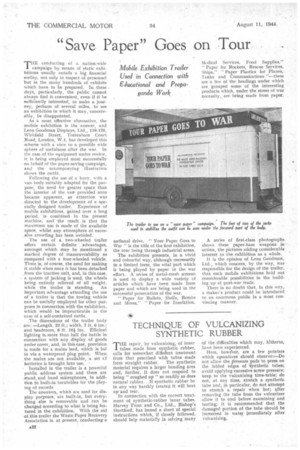TECHNIQUE OF VULCANIZING SYNTHETIC RUBBER
Page 34

If you've noticed an error in this article please click here to report it so we can fix it.
THEHE repair, by vulcanizing, of inner tubes made from synthetic rubber, calls for somewhat different treatment from that practised with tubes made from straight rubber. The synthetic material requires a larger bonding area and, further, it does not respond to being " roughed up " so readily as does natural rubber. If synthetic rubber he in any way harshly treated it will heat up-and tear.
In connection with the correct treatment of synthetic-rubber inner tubes, Harvey Frost and Co., Ltd., Bishop's Stortford, has issued a sheet of special instructions which, if closely followed, should help materially in solving many of the difficulties which may, hitherto, have been experienced.
Here, however, are a few painters which operatives should observe;—Do not allow the pressure pads to press on the folded edges of synthetic tubes; avoid applying excessive screw pressure; keep to the vulcanizing time-table; do not, at any time, stretch a synthetic tube and, in particular, do not attempt to stretch a repair when hot; after removing the tube from the vulcanizer allow it to cool before examining and testing; it is recommended' that the damaged portion of the tube should be immersed in water immediately after vulcanizing.




















































